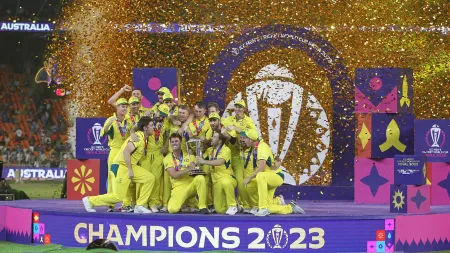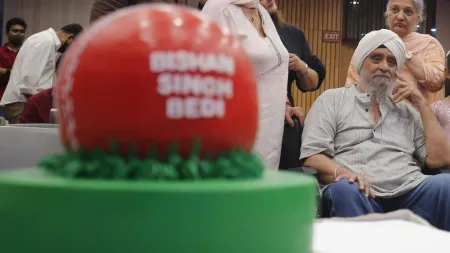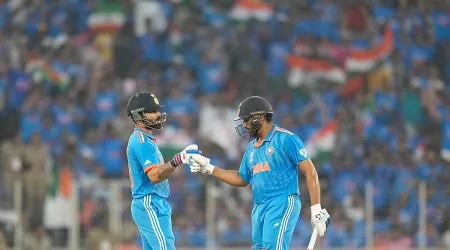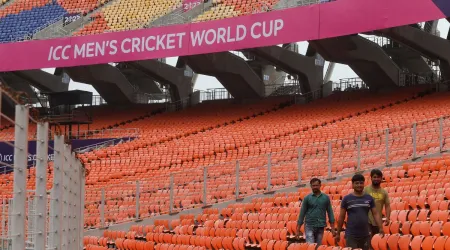- India
- International
Like in other corners of the world, India too had its ‘Maradona’
With a diminutive frame and sudden acceleration, India quickly found for Krishanu Dey football's most stratospheric adjective - Indian Maradona.
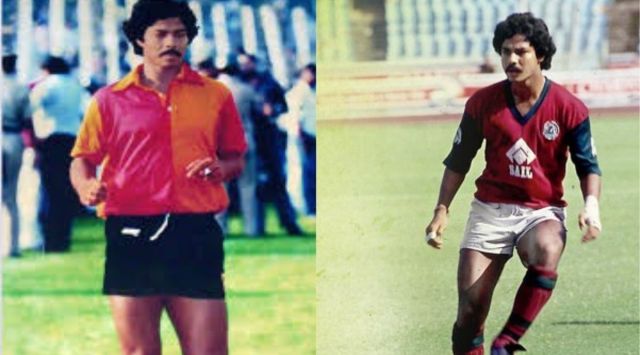 Krishanu Dey, with a sumptuous left foot, was nominated by NYT as India's claimant to the exalted comparison. (East Bengal Club)
Krishanu Dey, with a sumptuous left foot, was nominated by NYT as India's claimant to the exalted comparison. (East Bengal Club)A wicked left foot, close control and dribbling, an intuitive positional sense, that grand ability to zip forth a defence splitting pass while causing pulse-racing excitement in the stands. Krishanu Dey had it all. And with a diminutive frame and sudden acceleration, India quickly found for him football’s most stratospheric adjective – Indian Maradona.
As tributes poured in for the Argentine legend, the New York Times drew up a list last week of players from far flung football outposts, who reminded spectators of the riffing magic of Diego Maradona. India had fallen header-and-heels for its own ‘Maradona’ in the 1980s and early ‘90s. The Kolkatan with a sumptuous left foot was nominated by NYT as India’s claimant to the exalted comparison.
Looking for Diego’s successors has been a favourite pastime for pundits and fans alike since Maradona’s march to the the summit of world football in the 1986 World Cup at Mexico. From Romania’s Gheorghe Hagi to Japan’s Hidetoshi Nakata, the world drummed up anticipatory excitement over many ‘new Maradonas’ across the globe and across generations.
Dey died young, in 2003 at 41 years of age. His top-flight career in Calcutta club football and the national team spanned 12-odd years. His rise in Indian football coincided in fact with Maradona’s magic in Mexico. Overzealous East Bengal fans put him on a higher pedestal then, calling Maradona ‘Argentina’ar Krishanu’ (the Krishanu of Argentina).
Read| Diego Maradona and his hand with God
At least until the early ‘90s, fanaticism was a key component of Calcutta football. That was a reason why midfielder Goutam Sarkar became ‘chhoto Beckenbauer’ (little Beckenbauer) and Maradona, ‘Argentina’ar Krishanu’. Modern-day fans, grown up on an overdose of international and European club football, would of course have a hearty laugh at the naivete of some of their older colleagues.

Dey was the ‘prince charming’ of the Calcutta maidan in the 1980s. He arguably had the best-ever left foot in Indian football, which brought in the ‘Indian Maradona’ moniker. As his contemporaries would attest, Dey’s football thrived on aestheticism.
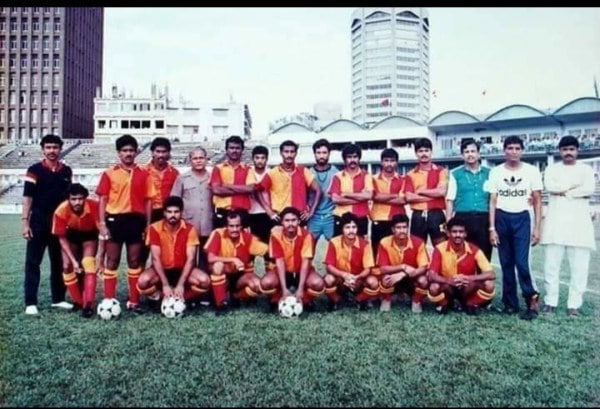 East Bengal team in 1991. (East Bengal Club)
East Bengal team in 1991. (East Bengal Club)
Fantastic control
“Krishanu had fantastic close control. Dribbling was the very essence of his game and he could do it both ways, inside and outside. He also had a very good peripheral vision, which helped him supply excellent through balls and quality final passes,” Mohun Bagan legend Subrata Bhattacharya, an Arjuna awardee, told The Indian Express.
Bhattacharya mother-henned Dey, when the latter joined Bagan in 1982. He later played against him several times after Dey moved to East Bengal in 1985. Among all the defenders, Bhattacharya was the most successful in neutralising the otherwise unstoppable Dey.
“I knew his game inside out, which helped me. The trick was to close him down with a player who would go with power, while you waited for the second ball. See, we are talking about Indian football here and the context is important. Krishanu’s style and rhythm, in Calcutta club football and Indian football, had been similar to Maradona and hence he was called the ‘Indian Maradona’, Bhattacharya said.
Watch:
He put things in perspective: “Even in Europe and/or Latin America, at the highest level, the majority of the ‘new Maradonas’ found it difficult against double-covering – someone closing them down, while the other defender/midfielder waiting for the second ball. Only the original Maradona could turn the first marker, skip past the second, nutmeg the third on a regular basis.”
Read | Explained: Does winning the World Cup make Maradona greater than Messi?
In the early ‘90s, Dutch giants PSV Eindhoven, managed by Bobby Robson and boasting of some world stars, came to Calcutta for the Tata Super Soccer series. There was a moment in the first half during their game at Salt Lake Stadium – Dey took a ball facing his own goal and on the turn, went past four opposition players who looked perplexed. After that, the Eindhoven players started to mark the ‘Indian Maradona’ closely and stubbed him with their physicality. Did physicality make Dey uncomfortable?
“That would be an oversimplification,” Bhattacharya observed.
“To start with, you don’t expect an Indian footballer to match the physicality of the European players and shine. Genetically they are stronger than the most from our part of the world. Also, we never had their grooming. Back then, we didn’t even have the concept of strength and conditioning coach. We had very little idea about sports science and injury management. India football was still amateur – players had to get a job apart from playing football. Many defenders here resorted to rough football to stop Krishanu. But it wasn’t that he got intimidated. He could take a kick,” he added.
As Bhattacharya recalled, in his pomp, Dey’s dribbling was indeed some heady edge of the seat stuff.
A Diego in every nation
Argentina understandably has had many ‘new Maradonas’. But the moniker transcended geographic boundaries and playing levels.
Gheorghe Hagi
(Romania)
The ‘Maradona of the Carpathians’. Made 124 international appearances.
Andreas Herzog
(Austria)
The ‘Maradona of the Alps’ played 103 times for Austria, including two World Cups, won the Uefa Cup with Bayern Munich and was a free-kick specialist.
Hidetoshi Nakata
(Japan)
The ‘Maradona of the Orient’, Nakata won the Serie A title for Roma in 2001. Played in three World Cups.
Ryan Belal
(Saudi Arabia)
The ‘Maradona of the Desert’ earned the sobriquet after he scored with a handball in the Saudi league.
Hayden Tinto
(Trinidad and Tobago)
A classical violinist, he was called the ‘Caribbean Maradona’ for his skill.
Saeed Al-Owairan
(Saudi Arabia)
He was called the ‘Maradona of the Arabs’ for his famous goal against Belgium at the 1994 World Cup.
Ali Karimi
(Iran)
His dribbling had earned him the ‘Asian Maradona’ moniker.
Alex Lopez
(Honduras)
He became the ‘Honduran Maradona’ after the 2012 Olympics.
Georgi Kinkladze
(Georgia)
The Maradona of the Caucasus, his dribbling made him a cult hero at Manchester City.
Roberto Merino
(Peru)
Showed early promise and was dubbed the ‘Maradona of the Andes’. Didn’t quite live up to his promise.


















